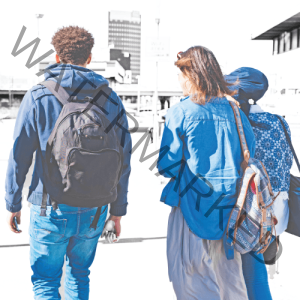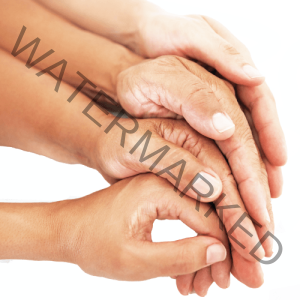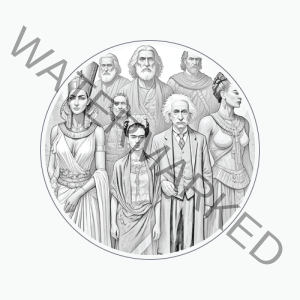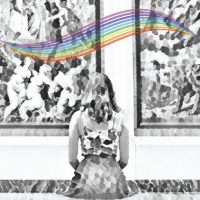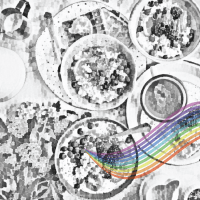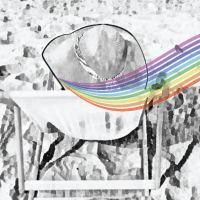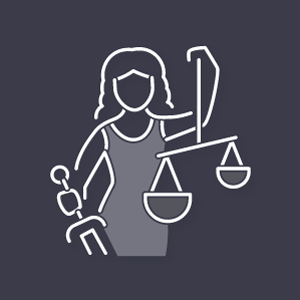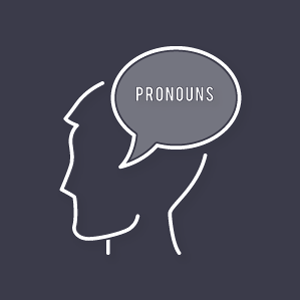Historically and today, the treatment and inequality of the LGBTQIA+ worldwide community have varied by country, region, and continent. The different approaches are typically due to the views of any given country and the influence of any cultural and religious beliefs. Many attitudes and traditions usually stem from the most prominent group (the majority) within society. Society’s majority consensus is, in turn, reflected in all of a country’s policies, laws, and actions of the ruling government. All the policies and laws affect those, especially minority groups living within these often-repressive countries. With global movements and more people rejecting traditional values and beliefs, the international LGBTQIA+ community has come a long way, especially over the past one hundred years.
Today, 73.9% of countries worldwide have decriminalised same-sex activities, 29.2% recognise some form of same-sex unions or partnerships, and 42% have laws concerning gender identity and expression. Even with all the positive developments, many are still living in fear of persecution, living in usually conservative, religious, and far-right countries. Often these countries cite religious texts written thousands of years ago or traditional values to justify their actions. Justifying any mistreatment applied, usually to small minority groups within their population. Groups who are today, living in fear, simply because they had come to terms with who they are, accepting their true self, and in the hope of no longer living a lie. If traditional values are to be considered, let us look through the history and at times throughout the centuries where this was not always the case.
The LGBTQIA+ community has had a turbulent history, with more lows than highs. Throughout the centuries, most individuals who would have identified as LGBT were often able to live on the fringes of society. To provide specific services, often behind closed doors. However, it was not until the old religions, with their many deities’ were no longer worshipped that things began to change. As modern-day religions became more dominant the world over, it was at that point; the LGBT community became actively sought out and persecuted. Typically, with many of the major faiths and governments targeting, through the law and prosecuting male, same-sex relationships, and specifically, the act of sodomy.
The first known laws were the Middle Assyrian Law Codes (1075 BC), which related to a man having sexual intercourse with a brother-in-arms (a fellow soldier). Anyone found guilty, as a punishment, would be turned into a Eunuch and castrated. Most of the anti-LGBTQIA+ laws relating to same-sex relationships in western countries originated from the 1200s when the Roman Catholic Church started a campaign against what it saw as indecent acts. The church and state began to seek out and persecute men performing same-sex acts with other men. Once found and prosecuted, many would be sentenced to death. Though some countries, such as Vietnam, Poland, and Djibouti, never criminalised sodomy, for those that did, it would take almost 600 years for those laws to begin to become decriminalised.
In 1791, countries such as Andorra, France, and Haiti were the first to decriminalise same-sex relationships. The gay nobleman, Jean-Jacques-Régis de Cambacérès, is credited for playing a pivotal role in decriminalising the sodomy law in France. Jean-Jacques was a lawyer and collaborated on the writing of the French Penal Code. He effectively decriminalised same-sex relationships within France by leaving out and not mentioning sodomy within the penal code. However, many believe it was left out in error rather than a conscious decision.
Whether by error or design, removing the sodomy aspects of the law may have decriminalised same-sex activities; however, the vast majority in France still saw the act as immoral. Though no longer prosecuted on sodomy laws, many would still be arrested on indecency charges. The next most significant and targeted persecution was one hundred and fifty years later during the second world war. Though no official records were available, it is estimated that Nazis arrested over 100,000 homosexual men in Germany. Over 50,000 were prosecuted, and an estimated 15,000 were incarcerated in Nazi concentration camps.
After the second world war ended, many western countries began to decriminalise same-sex relationships. It was not until the late 20th century that the community started to see improvements to their rights, and acceptance amongst the majority began to gain momentum. In the 1960s, the LGBTQIA+ community, following the Stonewall Riots, refused to be marginalised anymore. A protest which started a global equality movement and one which is still going on strong even today.
Some of the earliest images relating to homosexual intercourse were found on rock art in Sicily, Italy, and is estimated to be from 9,600 to 5,000 BC. From the 10th to 6th centuries, evidence of same-sex relationships is often found in legal scriptures, with many early laws relating to the castration of homosexual slaves and house servants. In Ancient Rome, it was common for Roman men, both those ordinary and of high standing within society, to have sexual relations with slaves, former slaves, prostitutes, and entertainers. The practice was accepted within society, and any man involved in a same-sex relationship was not seen as less masculine or risked losing their social standing.
Though same-sex relationships were commonplace, it was often with young men in a passive role, typically from 12 up until the age of 20. Same-sex relations were accepted; however, for many Roman men, it was purely physical. Most Roman men would be in heterosexual marriages with families, as marriage was viewed as only between men and women in Roman society.
In Ancient Greece, there was a practice known as Pederasty, in which society socially recognised a same-sex relationship between an adult male and a pubescent or adolescent boy. Regimental units would often include same-sex couples in the military. The Ancient Greeks believed that love between soldiers helped boost their fighting spirit. However, two adults in a same-sex relationship from the same or similar social standing would be seen as complex. There would often be a social stigma associated, as society would classify relationships and partners roles into passive and active.
It is unclear how same-sex relationships were viewed in Ancient Egypt. When archaeologists discovered the tombs of two high ranking male officials (Nyankh-Khnum and Khnum-Hotep), they were surprised to find the two men buried together. Same-sex burials are rare, and it is not seen as a standard practice amongst the ancient Egyptians. Both men within the tomb had separate families, wives, and children; however, they were buried together. Buried with them were several paintings depicting the two men facing one another with their nose’s touching, which in ancient Egypt usually represented kissing.
Same-sex female relationships throughout history are often viewed differently from the male equivalent. Though many lesbians faced struggles, ridicule, and how they identified was often seen as immoral, very few laws or prosecutions relating to women in same-sex relationships took place. Lesbian relationships can be found in text and drawings from thousands of years ago and were featured in Greek mythology. The term for female homosexuals (Lesbians) is relatively new and taken from the name of the island of Lesbos, the birthplace of Sappho. Sappho was an ancient Greek poet who wrote powerful and emotional content directed towards other women. The term was not applied to female homosexuality until early in the 19th century.
Many often think of same-sex relationships regarding LGBTQIA+ history; however, most do not realise the rich and long history relating to the transgender community. Some early texts date transgender priests known as Gala over 4,500 years ago. Graves have been discovered from the same period of possible trans or third-gender people in Europe. In Ancient Greece and Rome, it is believed that the Galli priests were transexual women, and it is documented that the Roman Emperor Elagabalus preferred to be referred to and addressed as a woman.
The transgender community throughout ancient history was often mainly seen as spiritual. In the Indian subcontinent and Thailand, the Hijras and Kathoeys formed transgender, third gender, social and spiritual communities thousands of years ago. The Hijra were typically made up of Eunuchs, Intersex and Transgender people. They formed small communities led by a guru. They lived together, often after being rejected by their families, and many were forced into sex work. Modern-day Kathoeys in Thailand work predominately in shops, restaurants, beauty salons, and factories; however, some work in the entertainment industry and as sex workers. Kathoeys are more visible and accepted in Thai culture than any other transgender community worldwide. Though widely acknowledged, most people in Thailand are Buddhists. Many believe that the Kathoeys are the way they are due to past life transgressions.
In the native American, first nation communities, the term “Two-spirit” was used as an umbrella term for people from both the native American and LGBTQIA+ communities. The attitudes and treatment of the Two Spirt community varied. However, Blackfoots, as they were known, were individuals in same-sex relationships or transgender individuals, that were often revered spiritual leaders, brave warriors, or artisans. The views and the treatment of two-spirited individuals varied between tribes and regions. The treatment was extreme, from being revered by one tribe to being ridiculed by another. The first nation communities have struggled with the two-spirits over the year. Many from the native American community are trying to educate the world on reality. Not on the romanticised versions publicised through the media of two-spirits.
The LGBTQIA+ community has for a long-time been on the fringes of society, been ridiculed, frequently persecuted, and the act, often being seen as immoral and wrong. Same-sex relationships occurred in all societies and people from all classes and social-economic backgrounds worldwide. Many cultures and communities knew of same-sex relationships. However, if those relationships were kept secret, were never discussed, and were treated by those involved with great shame, they could continue in secret.
Even in some cultures today, adult men could take young men as long as they played an active role. Many form relationships, objectifying and having intercourse with these younger men, still believing that they are heterosexual. Though the treatment for community members has been different, many Lesbians would often be revered and sought after. Not for the status of their relationship, more for the enjoyment of others. The transgender and third-gender community has long been mistreated. Historically, men were castrated as a form of punishment. Those who could not live a lie risked being ridiculed and rejected by society.
Modern science and psychology have long established that identifying as LGBTQIA+ is not a mental illness or as something wrong, knowing that people are simply born that way. Throughout history, sex, love, and relationships were separated, where sex was more transactional than emotional. It is hard to know if ancient Greek and Roman slaves, concubines, and prostitutes would have identified as modern LGBTQIA+ individuals. Not only that, but also whether they would have also had consented to how they were being treated. One consistent fact remains throughout history: even though the risks were high, members of the LGBTQIA+ community are unable and unwilling to hide who they are.
Today, societies and communities, even the Roman Catholic Church, are softening their stance on the LGBTQIA+ community. We still have a long way to go, and the world has and is changing for the better. No longer should the community be used as a political pawn or have their rights taken away, simply because of who they love or want to be.
Love is love, and all lives matter




